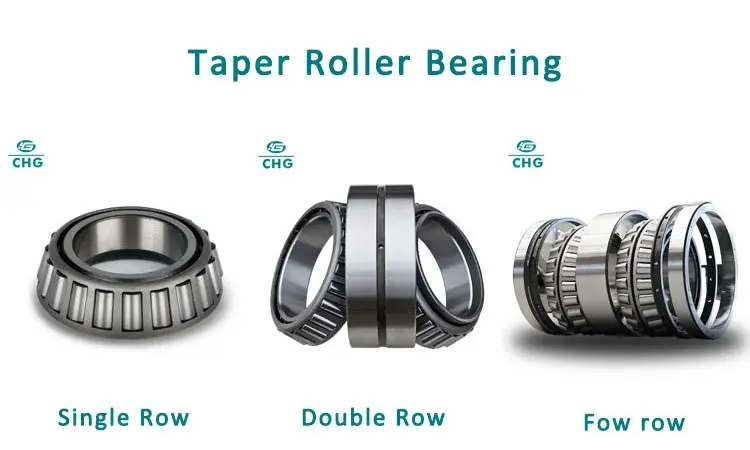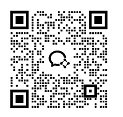What is a Double Row Tapered Roller Bearing?
Double row tapered roller bearings are specialized mechanical components designed to handle heavy radial and axial loads in various industrial applications. These bearings consist of two rows of tapered rollers arranged in opposite directions, allowing them to support forces from multiple angles simultaneously. The unique configuration of double row tapered roller bearings provides enhanced stability, load capacity, and durability compared to single row bearings, making them ideal for demanding environments and critical machinery.
How do Double Row Tapered Roller Bearings Work?

Double row tapered roller bearings operate on the principle of rolling friction, which significantly reduces wear and energy loss compared to sliding friction. The key to their functionality lies in their geometry and arrangement:
1. Tapered Design: Each roller in the bearing has a slightly conical shape, with the larger end of the taper facing outward. This design allows the rollers to make contact with both the inner and outer races along a line rather than a point, distributing the load more evenly.
2. Double Row Configuration: The bearing consists of two rows of tapered rollers arranged in opposite directions. This arrangement creates a symmetrical load distribution pattern, enabling the bearing to handle both radial and axial loads from either direction.
3. Cage Structure: The rollers are held in place by a cage or retainer, which ensures proper spacing and prevents roller-to-roller contact. This cage also helps in maintaining proper lubrication distribution throughout the bearing.
4. Raceways: The inner and outer rings of the bearing feature precision-machined raceways that guide the rollers. The tapered shape of these raceways complements the roller geometry, allowing for smooth rotation and optimal load distribution.
When a load is applied to the bearing, it is transmitted through the rollers to the raceways. The tapered design allows the rollers to wedge between the inner and outer races, creating a self-aligning effect that helps maintain proper contact even under heavy loads or slight misalignments.
The double row configuration provides several advantages:
- Increased Load Capacity: By distributing the load across two rows of rollers, these bearings can handle significantly higher loads than single row bearings of similar size.
- Enhanced Stability: The opposing arrangement of the roller rows provides better resistance to tilting moments, ensuring stable operation even under complex loading conditions.
- Improved Stiffness: The double row design increases the overall stiffness of the bearing assembly, reducing deflection and improving the precision of rotating components.
What are the Main Applications of Double Row Tapered Roller Bearings?
Double row tapered roller bearings find extensive use in a wide range of industries due to their exceptional load-bearing capabilities and versatility. Some of the primary applications include:
1. Automotive Industry:
- Wheel Hubs: Double row tapered roller bearings are commonly used in vehicle wheel hubs, where they must support both the vehicle's weight (radial load) and cornering forces (axial load).
- Transmissions: These bearings are crucial components in automotive transmissions, supporting gear shafts and handling the complex loads generated during power transmission.
- Differentials: The high load capacity and ability to handle thrust loads make these bearings ideal for use in differential assemblies.
2. Heavy Machinery and Construction Equipment:
- Excavators and Cranes: The bearings are used in the slewing rings of excavators and cranes, allowing for smooth rotation of the upper structure while supporting massive loads.
- Bulldozers and Loaders: Track rollers and idler wheels in these machines often utilize double row tapered roller bearings due to their ability to handle high radial and axial loads.
- Mining Equipment: Various components in mining machinery, such as conveyor systems and crushers, rely on these bearings to operate efficiently under harsh conditions.
3. Industrial Manufacturing:
- Machine Tools: Precision machining equipment, such as lathes, milling machines, and grinding machines, use these bearings in spindle assemblies to ensure accuracy and rigidity during high-speed operations.
- Rolling Mills: Steel and aluminum rolling mills employ double row tapered roller bearings in work roll chocks, where they must withstand extreme loads and challenging environments.
- Gearboxes: Industrial gearboxes, especially those used in heavy-duty applications, often incorporate these bearings to support gear shafts and handle the complex loads generated during power transmission.
4. Wind Turbines:
- Main Shafts: The main rotor shafts of wind turbines often use large double row tapered roller bearings to support the massive weight of the rotor and handle the varying loads caused by wind forces.
- Yaw and Pitch Systems: These bearings are also used in the yaw system (which allows the nacelle to rotate) and pitch system (which adjusts blade angles) of wind turbines.
5. Railway Industry:
- Axle Bearings: Train wheel axles utilize these bearings to support the weight of rail cars and locomotives while allowing for smooth rotation and handling lateral forces during curves.
- Traction Motors: Electric locomotives and multiple units use double row tapered roller bearings in traction motor assemblies to ensure reliable performance under demanding conditions.
6. Aerospace:
- Landing Gear: Aircraft landing gear systems incorporate these bearings to handle the high impact loads during landing and the varying loads during taxiing.
- Propeller Systems: In propeller-driven aircraft, these bearings are used to support propeller shafts, handling both the thrust of the propeller and the radial loads from its weight.
The versatility of double row tapered roller bearings makes them indispensable in these and many other applications where high load capacity, stability, and reliability are essential. Their ability to handle combined radial and axial loads, coupled with their self-aligning properties, ensures optimal performance in a wide range of operating conditions.
What Factors Should be Considered When Selecting Double Row Tapered Roller Bearings?
Selecting the appropriate double row tapered roller bearing for a specific application is crucial to ensure optimal performance, longevity, and reliability of the machinery or equipment in which it will be used. Several key factors should be carefully considered during the selection process:
1. Load Characteristics:
- Radial Load: Assess the magnitude and direction of the primary radial forces acting on the bearing.
- Axial Load: Determine the axial (thrust) loads in both directions, as these bearings excel in handling bidirectional axial forces.
- Combined Load Ratio: Consider the ratio of radial to axial loads, as this affects the bearing's performance and lifespan.
- Dynamic vs. Static Loads: Evaluate both the dynamic loads during operation and static loads when the machinery is at rest.
2. Speed Requirements:
- Operating Speed: Determine the typical and maximum rotational speeds the bearing will experience.
- Speed Limits: Ensure the selected bearing's speed rating is suitable for the application, considering factors like lubrication method and heat generation.
3. Environmental Conditions:
- Temperature Range: Consider the operating temperature range, including any extreme temperatures the bearing may encounter.
- Contamination Exposure: Assess the potential for exposure to dust, moisture, or other contaminants that may affect bearing performance.
- Corrosive Environments: If applicable, consider the need for corrosion-resistant materials or special coatings.
4. Dimensional Constraints:
- Available Space: Determine the space limitations for the bearing assembly, including bore diameter, outer diameter, and width.
- Fit and Tolerances: Consider the required fits for both the shaft and housing, ensuring proper mounting and operation.
5. Precision and Stiffness Requirements:
- Runout Tolerances: Assess the level of rotational accuracy required for the application.
- System Stiffness: Consider the overall stiffness requirements of the assembly, as this can influence bearing selection and preload.
6. Lubrication:
- Lubrication Method: Determine whether the bearing will be grease-lubricated or oil-lubricated based on the application requirements.
- Re-lubrication Intervals: Consider the accessibility for maintenance and the desired service intervals.
7. Life Expectancy and Reliability:
- Required Service Life: Estimate the expected operational hours or revolutions for the bearing.
- Safety Factors: Apply appropriate safety factors based on the criticality of the application and potential consequences of failure.
8. Misalignment Tolerance:
- Expected Misalignment: Assess the potential for shaft or housing misalignment during operation or installation.
- Self-Aligning Capabilities: Consider whether additional self-aligning features are necessary.
9. Sealing Requirements:
- Sealing Method: Determine if integrated seals are required or if external sealing solutions will be used.
- Sealing Effectiveness: Consider the level of protection needed against contaminants and lubricant loss.
10. Cost Considerations:
- Initial Cost: Balance the upfront cost of the bearing with its expected performance and longevity.
- Lifecycle Cost: Consider long-term costs, including maintenance, potential downtime, and replacement intervals.
11. Special Requirements:
- Noise and Vibration: For applications sensitive to noise or vibration, consider bearings with optimized designs for quiet operation.
- Electrical Properties: In some cases, electrically insulated bearings may be necessary to prevent current passage.
12. Manufacturer Support and Availability:
- Technical Support: Consider the level of technical support and documentation available from the bearing manufacturer.
- Supply Chain: Assess the availability and lead times for both initial supply and future replacements.
By carefully evaluating these factors, engineers and maintenance professionals can select the most appropriate double row tapered roller bearing for their specific application. This thorough selection process ensures optimal performance, maximizes equipment uptime, and contributes to the overall efficiency and reliability of the machinery or system in which the bearing is installed.
It's important to note that while double row tapered roller bearings offer numerous advantages, they may not be the ideal choice for every application. In some cases, other bearing types such as deep groove ball bearings, cylindrical roller bearings, or spherical roller bearings might be more suitable depending on the specific requirements of the application. Therefore, consulting with bearing specialists or manufacturers is often beneficial in making the final selection.
Luoyang Huigong Bearing Technology Co., Ltd. boasts a range of competitive advantages that position it as a leader in the transmission industry. Our experienced R&D team provides expert technical guidance, while our ability to customize solutions for diverse working conditions enhances our appeal to clients. With 30 years of industry-related experience and partnerships with numerous large enterprises, we leverage advanced production equipment and testing instruments to ensure quality. Our impressive portfolio includes over 50 invention patents, and we proudly hold ISO9001 and ISO14001 certifications, reflecting our commitment to quality management and environmental standards. Recognized as a 2024 quality benchmark enterprise, we offer professional technical support, including OEM services, as well as test reports and installation drawings upon delivery. Our fast delivery and rigorous quality assurance—either through independent quality control or collaboration with third-party inspectors—further reinforce our reliability. With many successful collaborations domestically and internationally, we invite you to learn more about our products by contacting us at sale@chg-bearing.com or calling our hotline at +86-0379-65793878.
References:
1. SKF Group. (2021). "Tapered roller bearings." SKF.com.
2. Timken Company. (2022). "Double Row Tapered Roller Bearings." Timken.com.
3. NSK Ltd. (2020). "Tapered Roller Bearings." NSK.com.
4. Schaeffler Technologies AG & Co. KG. (2021). "Tapered Roller Bearings." Schaeffler.com.
5. NTN Corporation. (2019). "Tapered Roller Bearings." NTN.com.
6. American Bearing Manufacturers Association. (2022). "Roller Bearings." ABMA.com.
7. Koyo Bearings. (2021). "Double Row Tapered Roller Bearings." Koyousa.com.
8. FAG Bearings. (2020). "Tapered Roller Bearings: Technical Information." FAG.com.
9. IKO International. (2022). "Tapered Roller Bearings." IKO.co.jp.
10. SKF Group. (2018). "Rolling bearings." SKF Bearing Handbook.

